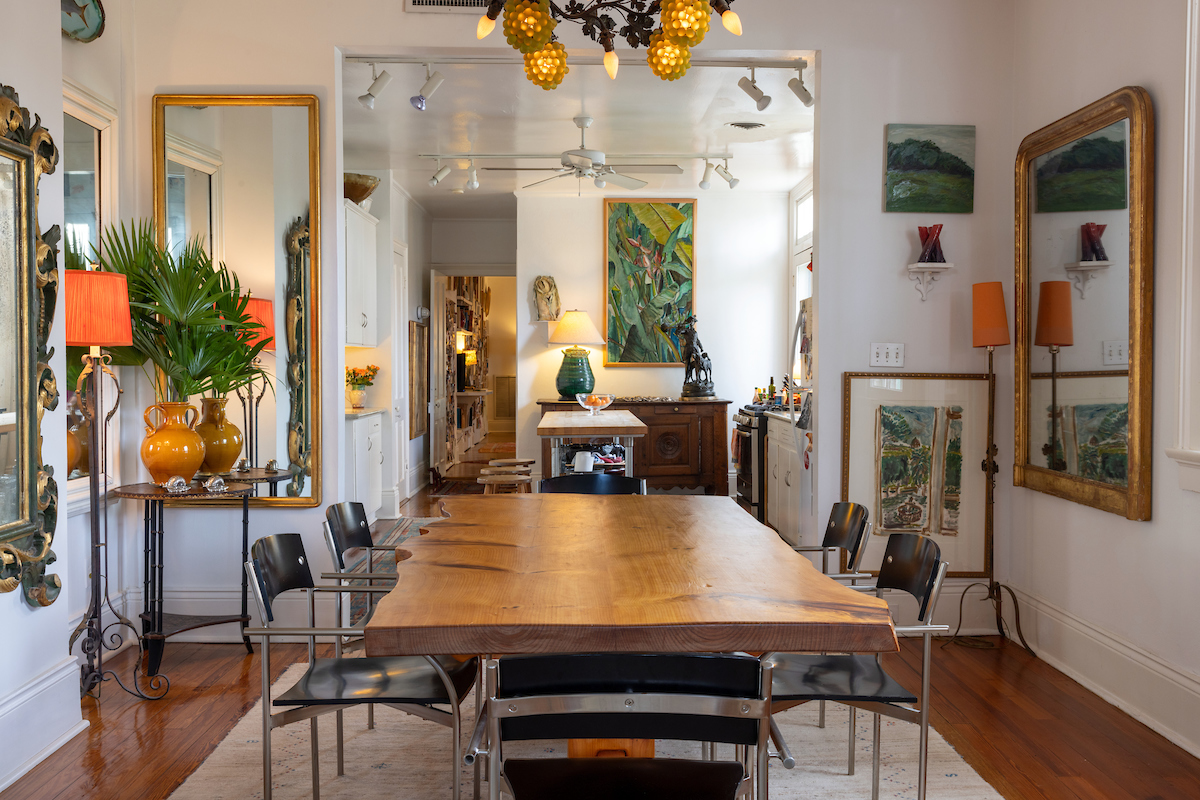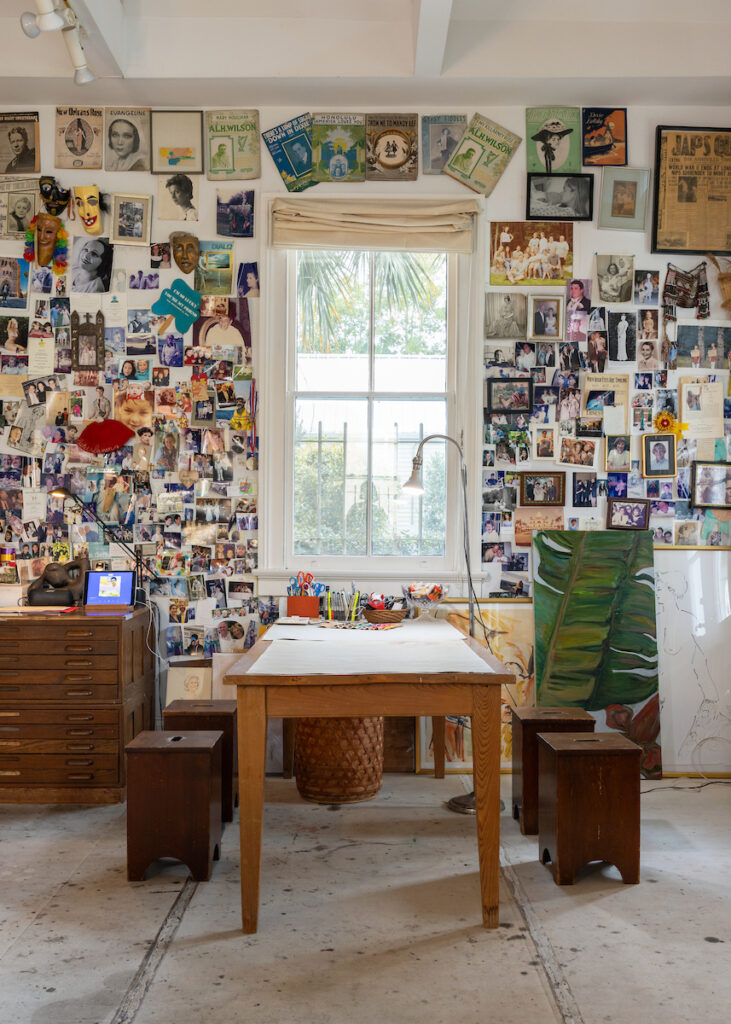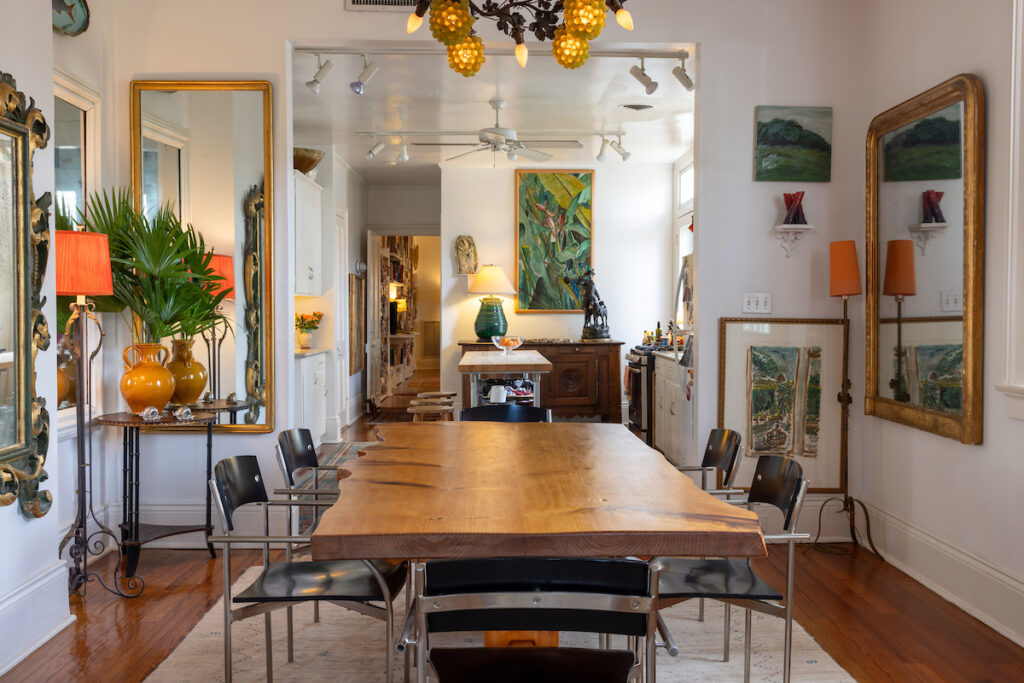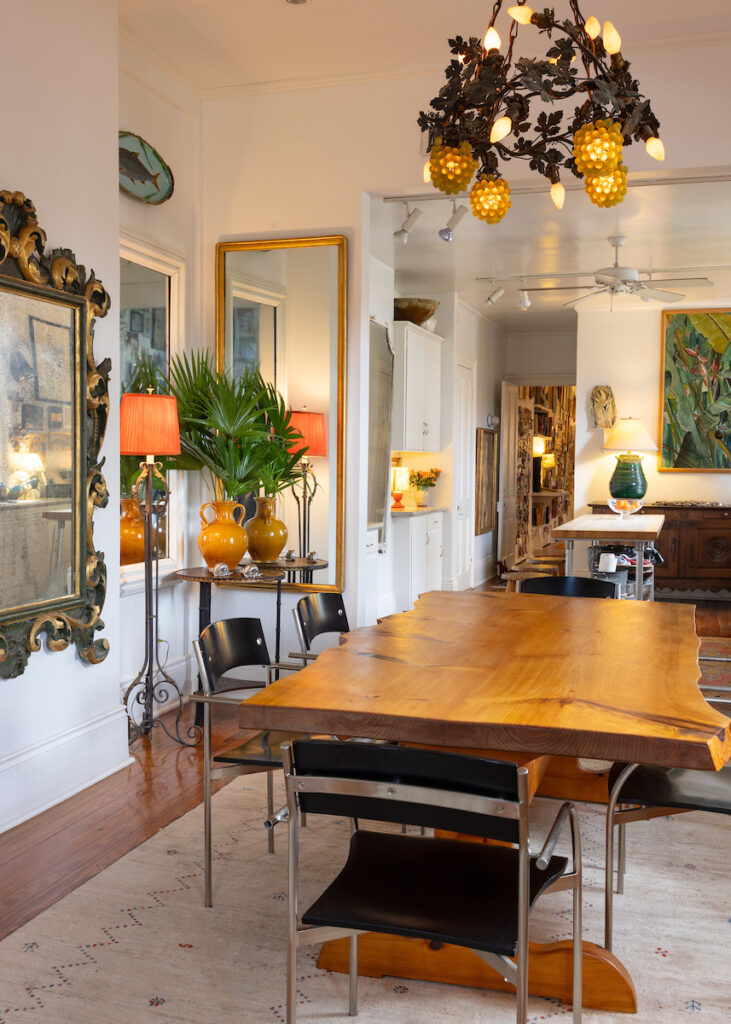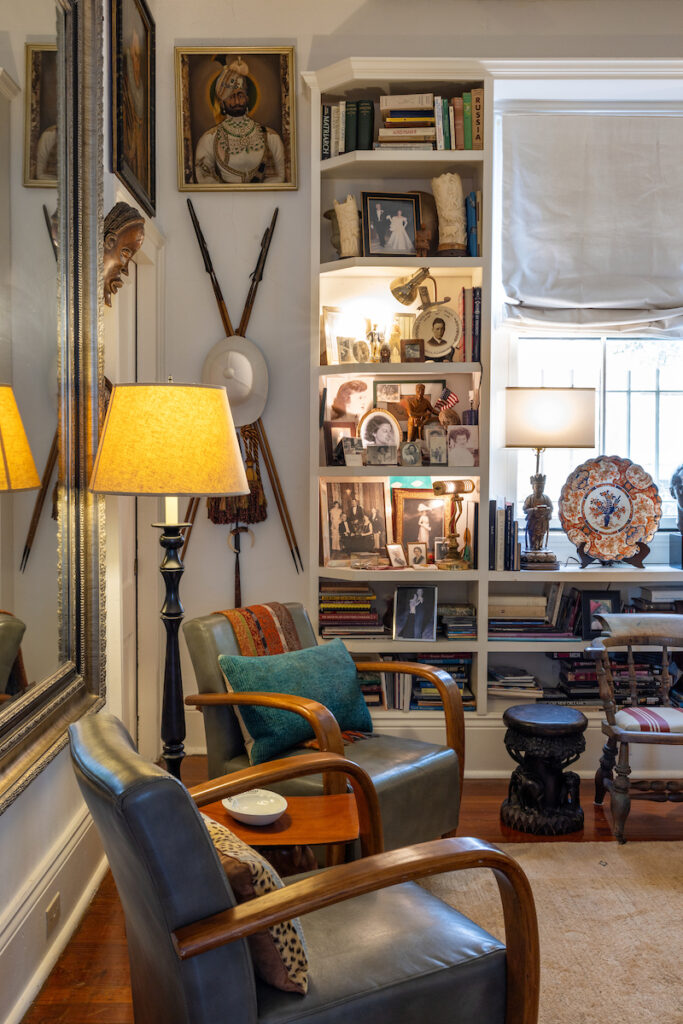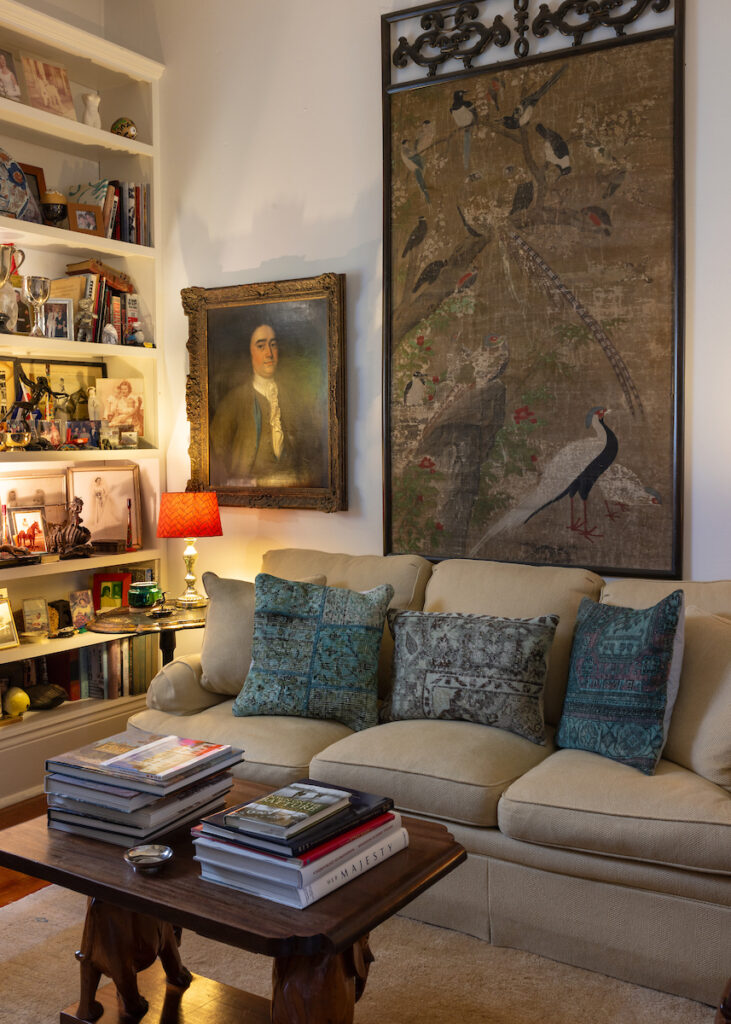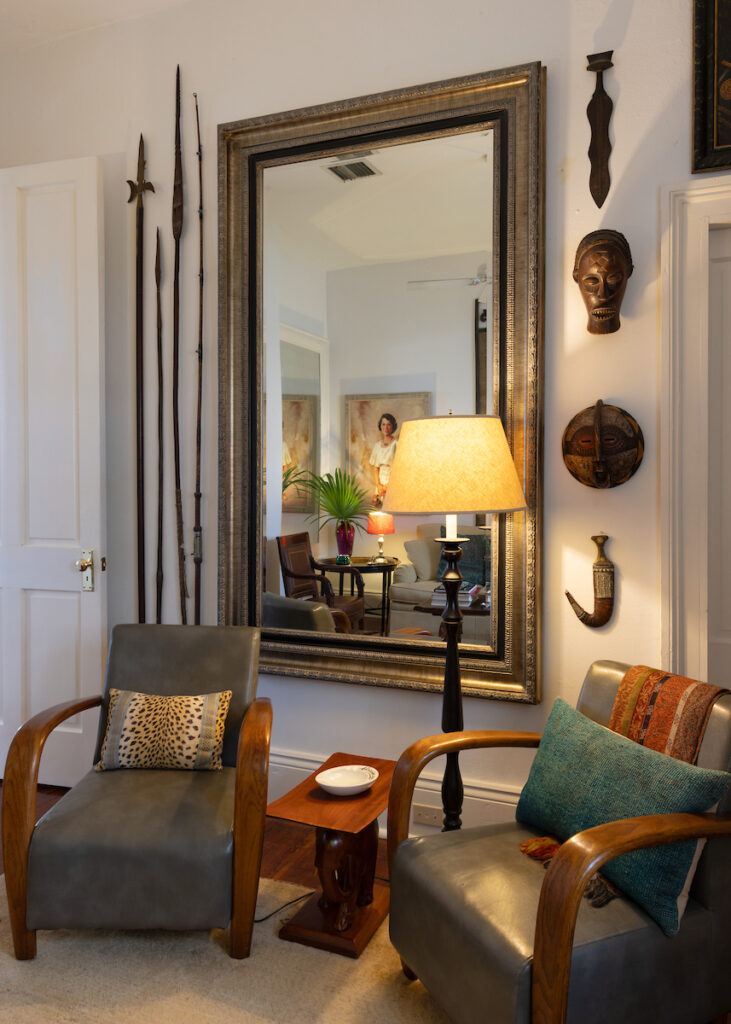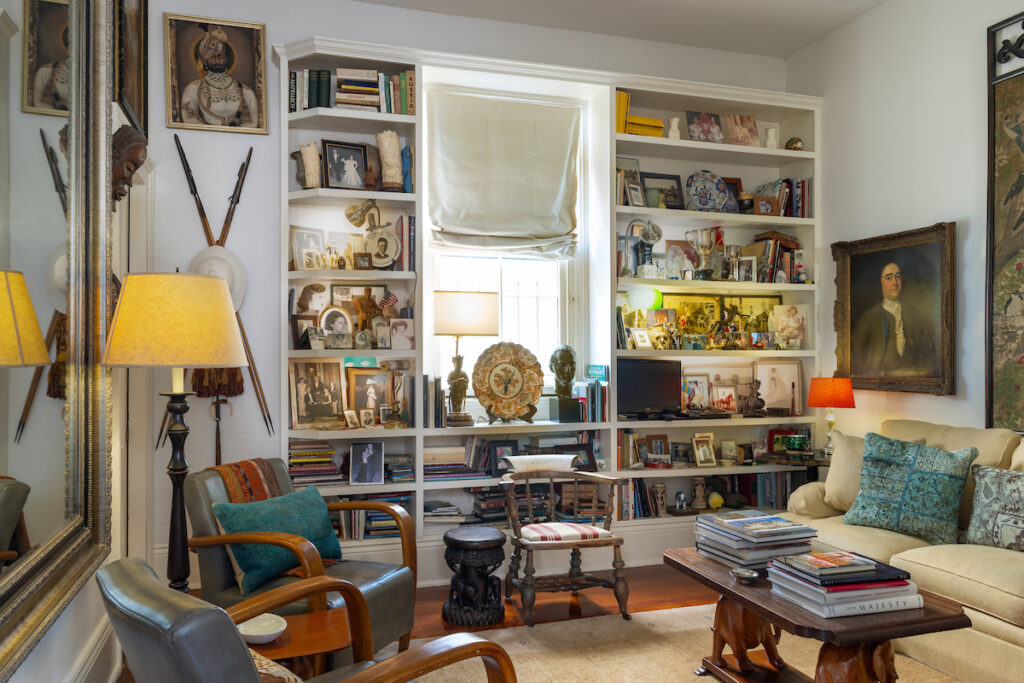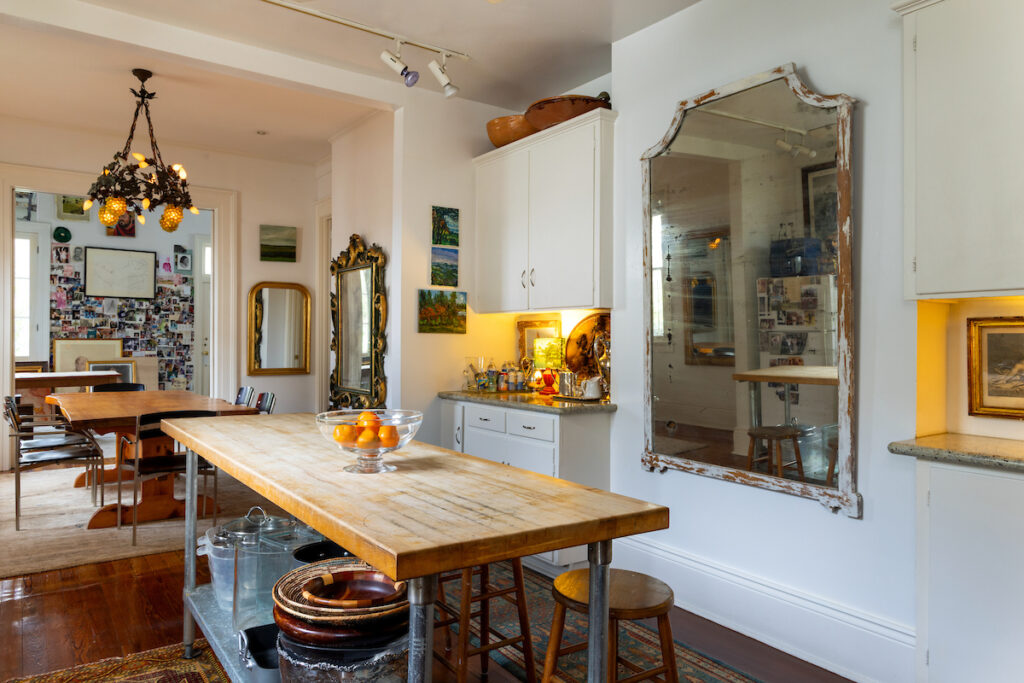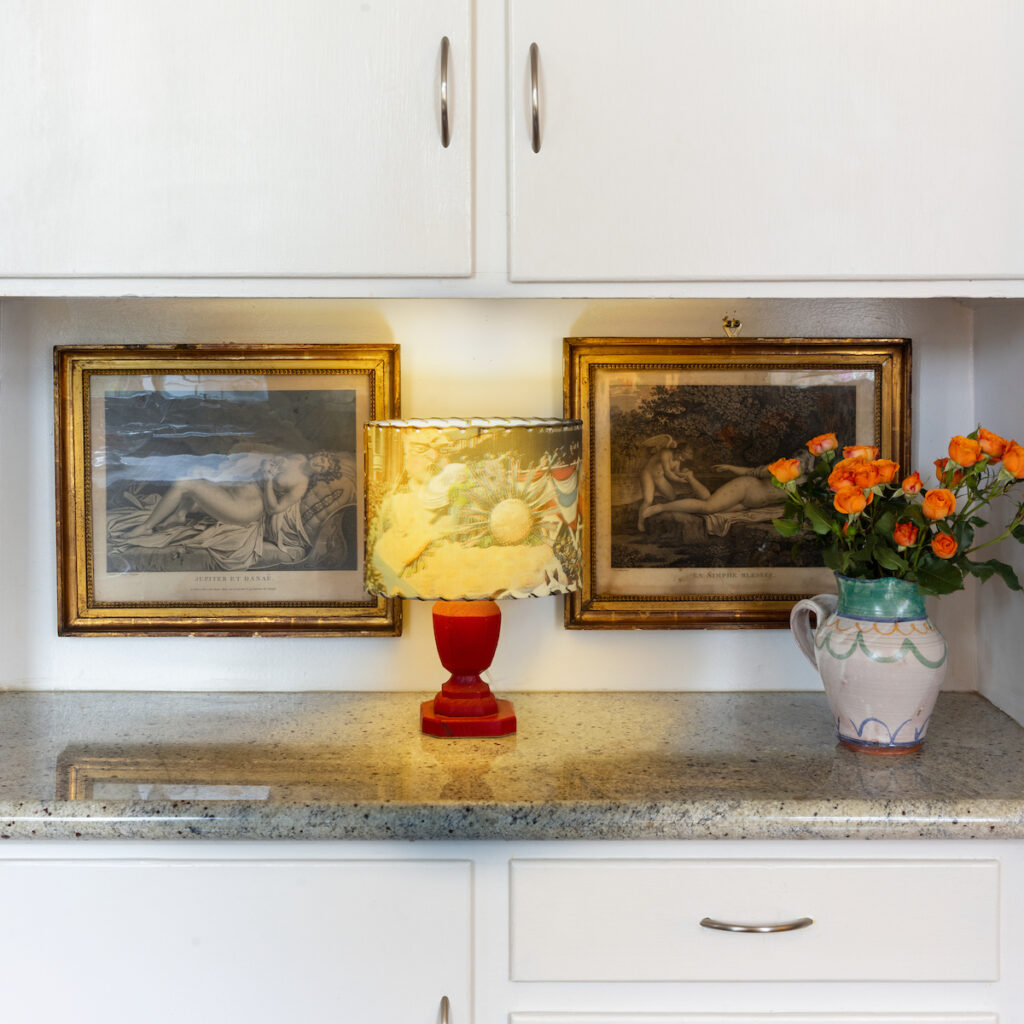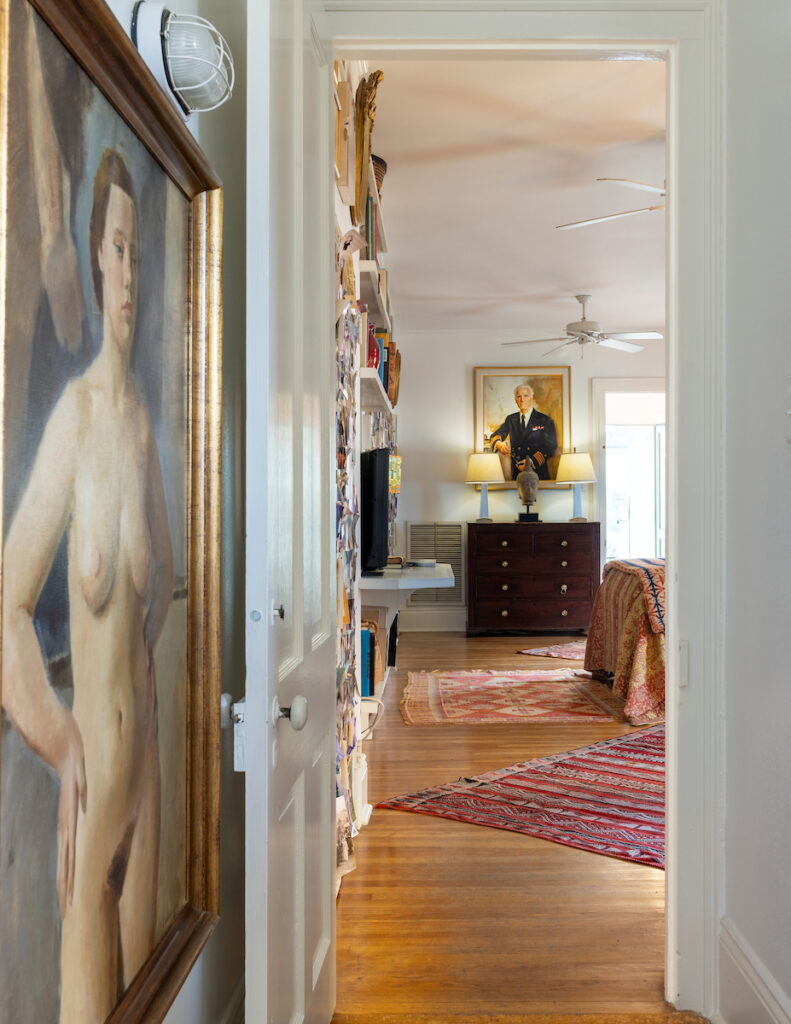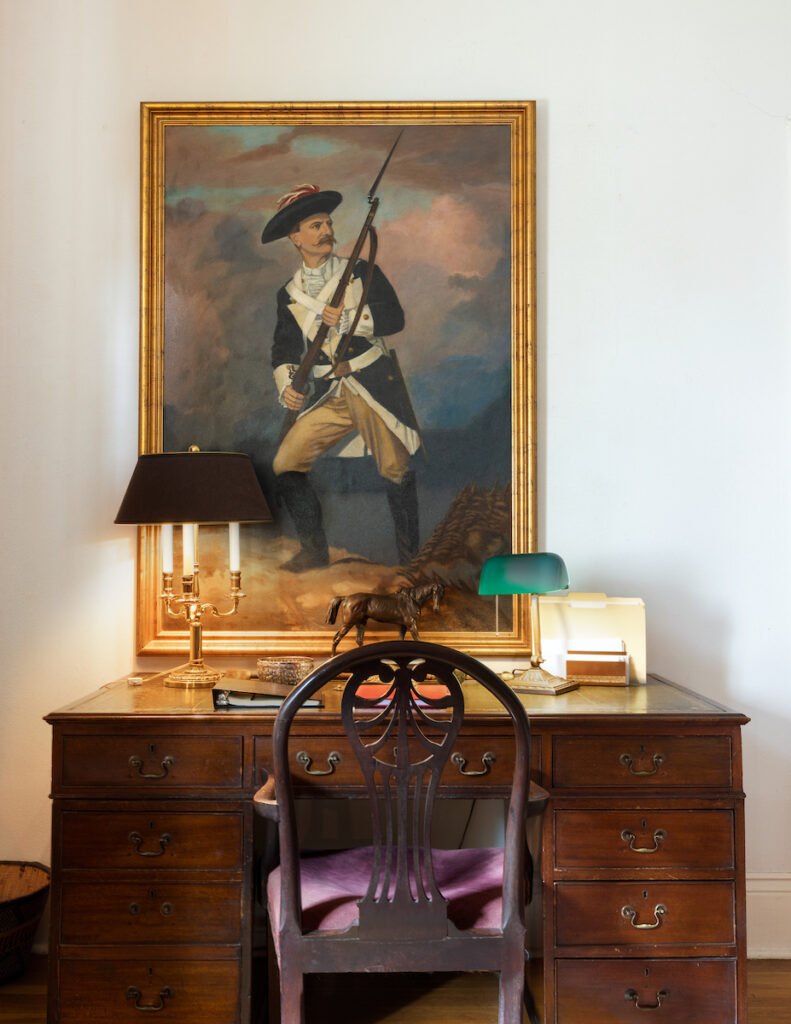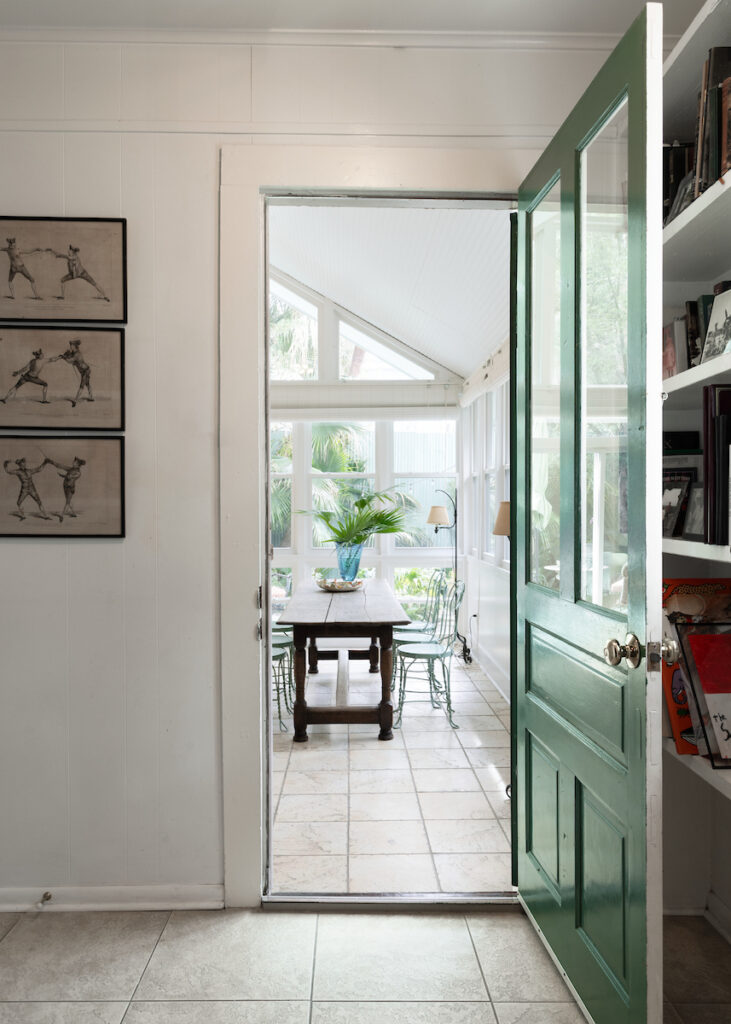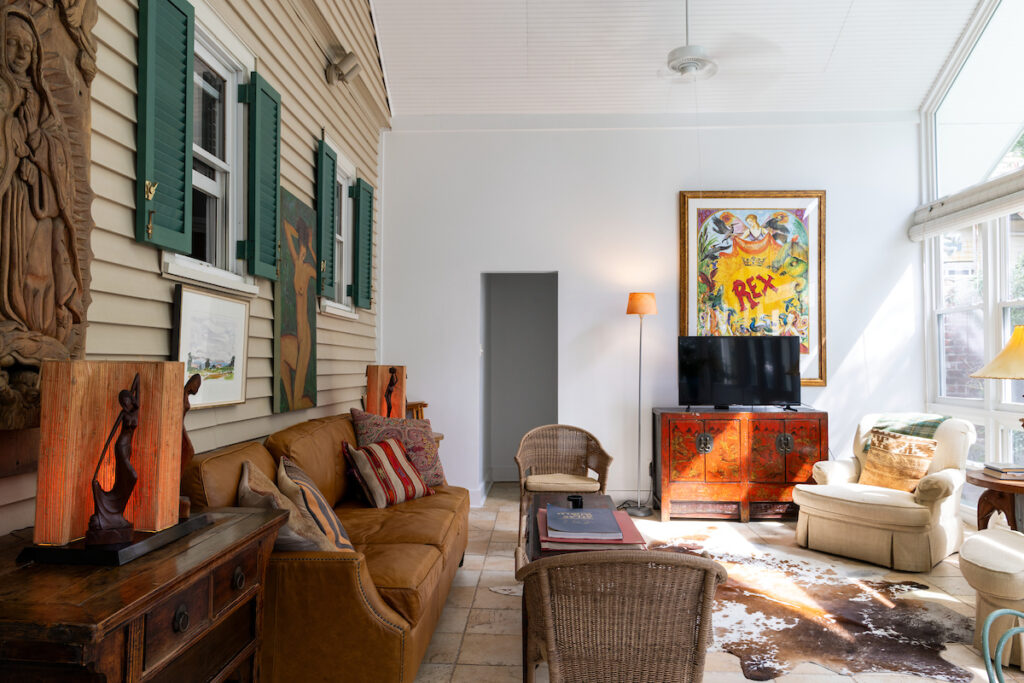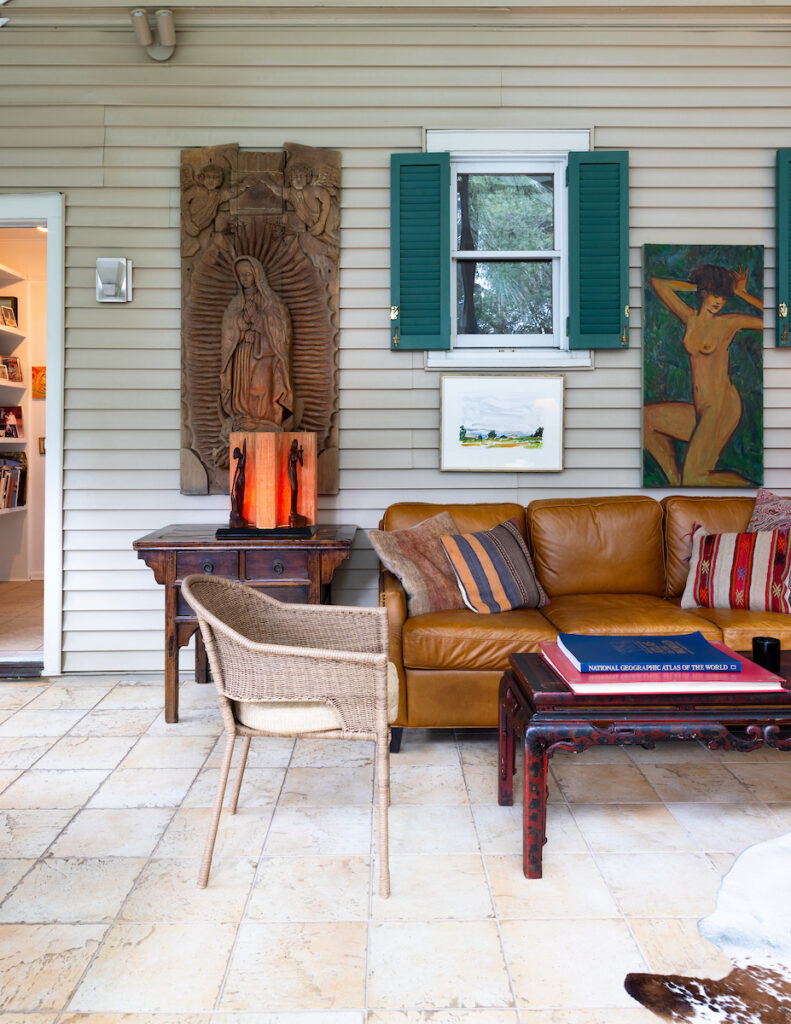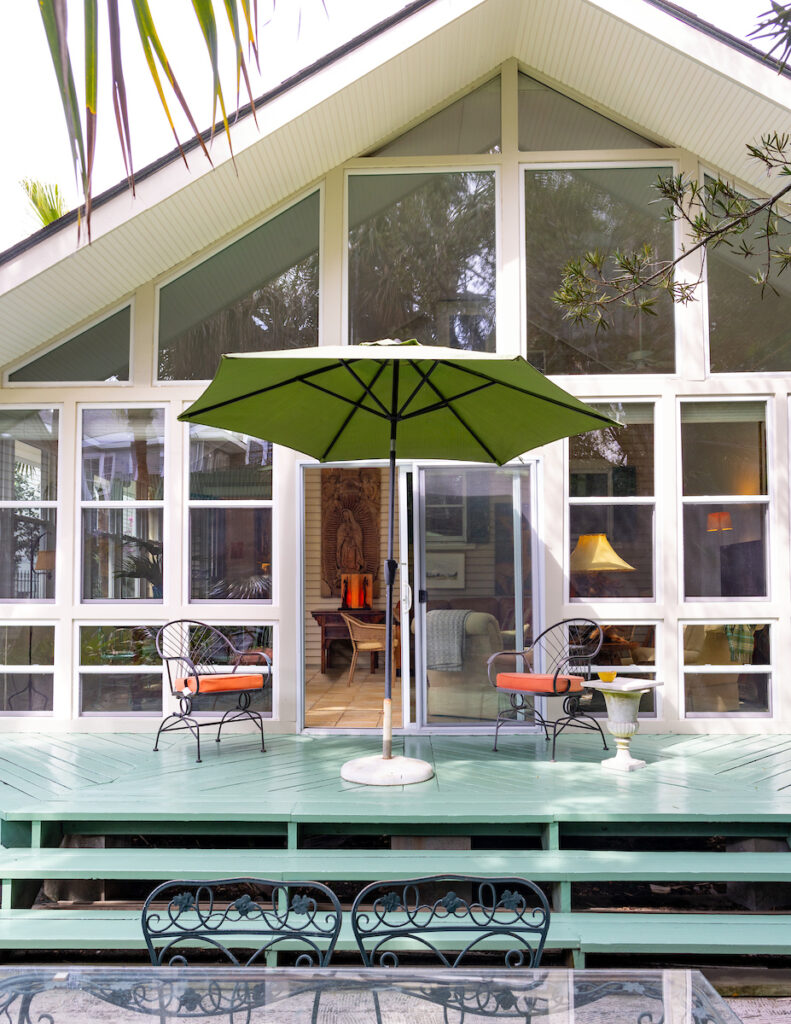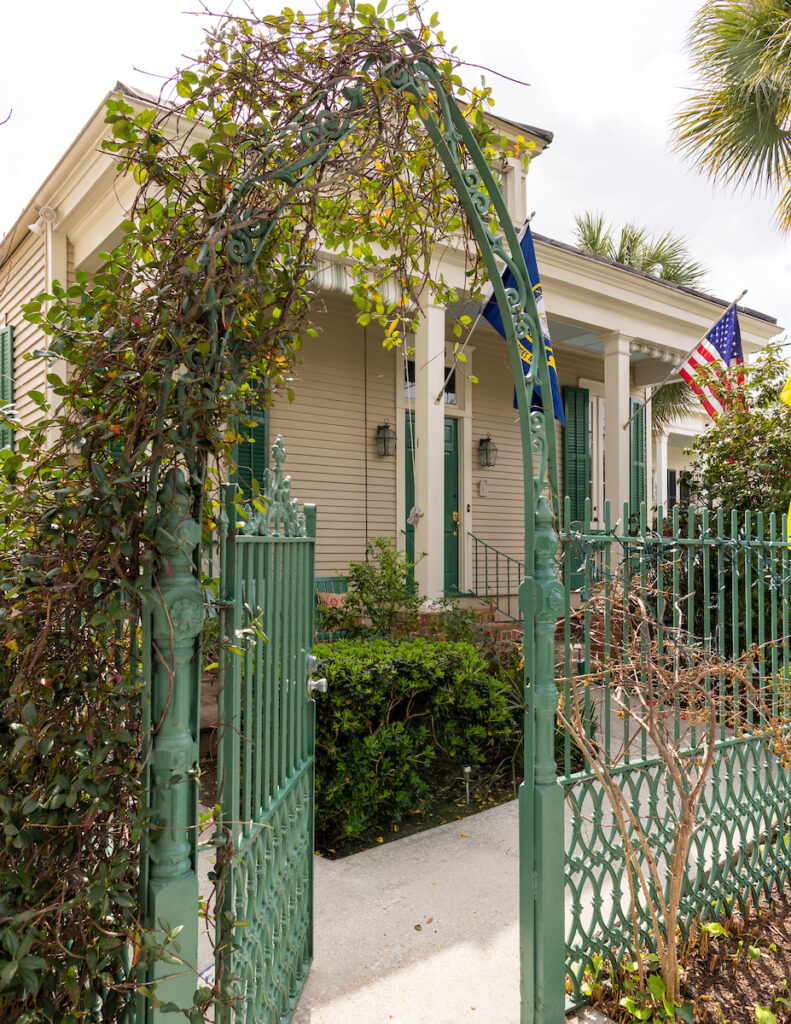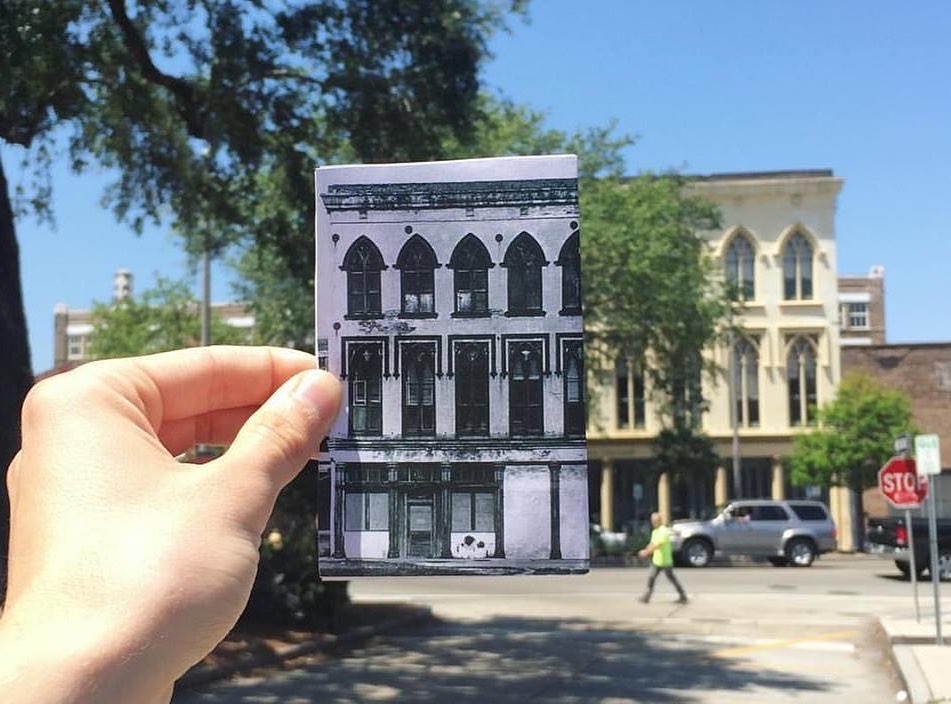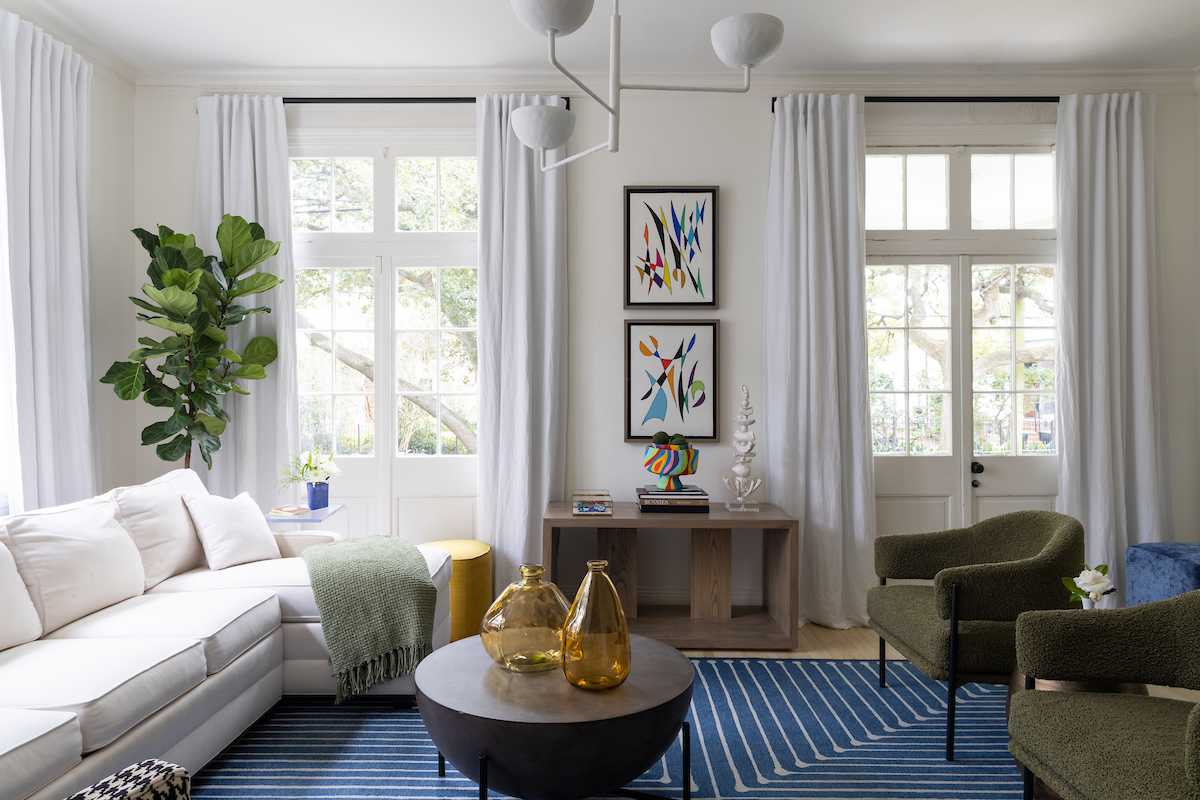Built circa 1870, the home at 525 Fern St. is a charming repository of New Orleans history. The exterior architecture is marked by an iron fence, a porch with squared columns, tall front windows and a dormer.
The interior, which has evolved over more than a century, blends the original shotgun arrangement of rooms, high ceilings and wood floors with an updated open flow, reams of natural light and an eclectic array of furnishings, art and collections.
The owner, artist Tim Trapolin, known for his murals, portraits and paintings, proudly, humorously and sometimes mischievously extolls the cherished family memories that reside within its walls. He bought the house in 1991 from the estate of his great aunt and uncle, Kitty and Warren Goodspeed.
“Their karma of twinkling gentleness pervades the house still, along with the lingering vague whiffs of bourbon-laden fruit cakes they made each August and put up in the kitchen pantry,” said Trapolin, who has left his own imprint on the house.
The front room, once the double parlor where Trapolin’s great aunt played bridge with friends, is now a home art studio covered wall-to-wall with photographs of family, friends and clients and with works by the artist. Trapolin removed doors and widened passages between rooms, built a cozy library and added a sunroom, which overlooks a lush private patio. He intentionally left the original back of the house (now an interior wall of the sunroom) complete with weather boards, windows, shutters and iron gate as a playful record of the house’s origins.
“Home should be an oasis from a crazy world,” Trapolin said. “Everything in my house is personal and has its own wonderful story.”
The artist has filled the house with mementos, colors and textures from an active life, but he is just as apt to send friends home with something they admire as he is to collect things. The most meaningful items are those that remind him of family, friends and travels.
Photo by Sara Essex Bradley
Photo by Sara Essex Bradley
Photo by Sara Essex Bradley
Photo by Sara Essex Bradley
Photo by Sara Essex Bradley
Photo by Sara Essex Bradley
Photo by Sara Essex Bradley
Photo by Sara Essex Bradley
The piano in the studio is often used when Trapolin entertains. Mounted with a collection of African spears on the library wall is a fishing rod that once belonged to his grandfather; an heirloom 16th century Edo screen hangs above the library sofa; the custom live-edge dining table (paired with Italian mid-century chairs) was made by his brother; the pottery skull in the library belonged to Trapolin’s grandfather who got it in Shanghai and kept it on his desk filled with peppermints for his grandchildren.
There is a plethora of art by fellow artists and friends, including George Dunbar, historic portraits (some of ancestors, including Trapolin’s great grandfather), self-portraits, colorful Moroccan rugs, and an assortment of elephants. A mint condition mid-19th century American quilt is lovingly used instead of packed away.
A favorite decorative piece is the dining room’s unusual Tiffany chandelier adorned with metal leaves and clusters of green glass grapes. Trapolin believes it dates to around 1910. The chandelier hung above his grandparents’ dining table, and he recalls being hoisted up to touch it as a curious child.
In the sunroom, an 18th century French worktable is paired with green ice cream parlor chairs that remind Trapolin of similar chairs that were part of his family’s Henderson Point home, which was destroyed by Hurricane Camille.
On the wall of the sunroom is a carved wooden altar piece of Our Lady of Guadalupe. Among the works hung salon-style in the bedroom are Rex Organization proclamations. Trapolin is one of the local artists who designed the krewe’s proclamations through the years. The group also includes Trapolin’s dear friend Alice Peak Reiss, who gave him his first art showing as a teenager. A focal point of the patio is a locally made statue of the sea god Nereus.
“My house is a repository for what makes me tick,” said Trapolin, an enthusiastic guardian of the house’s long legacy. “Love of people, love of Trinity [Church], love of travel.”
The house’s current incarnation is inseparable from the owner’s artistic eye. But he credits its magic to its familial inheritance and the unmistakable sense of place that comes from the “melodies of the streetcar, the bellowing great river boats, and the seagulls and parrots.”
“The Riverbend is a magical place,” said Trapolin, “with the great levee my front yard and the mighty Mississippi rolling along.”
Photo by Sara Essex Bradley
Photo by Sara Essex Bradley
Photo by Sara Essex Bradley
Photo by Sara Essex Bradley
Photo by Sara Essex Bradley
Photo by Sara Essex Bradley
Photo by Sara Essex Bradley
Photo by Sara Essex Bradley



